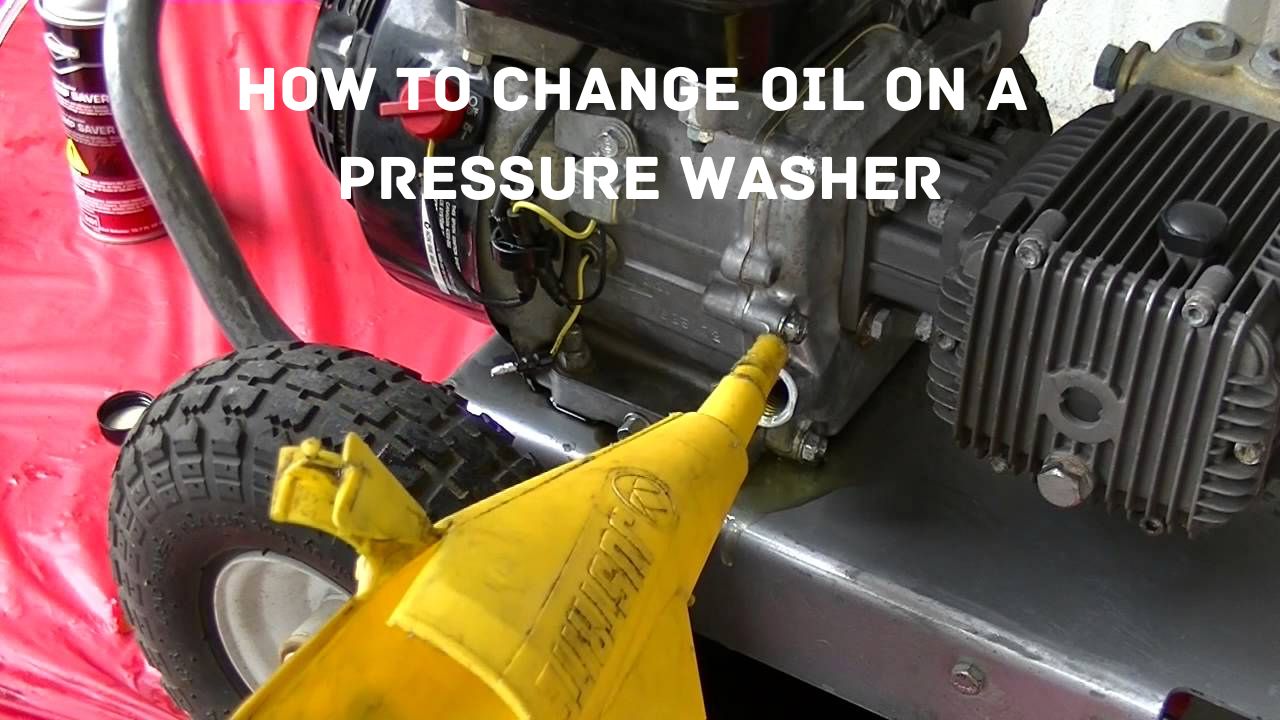How To Check & Change Oil On A Pressure Washer?
When you feel sluggish and exhausted, one way to recharge your energy is by eating. Similarly, do not rush to buy a new one if your pressure washer is not working efficiently.
Maintain it by changing its pump oil regularly! Although not all pressure washers require an oil change, most do. To help you out, here are step-by-step guidelines on changing the pump oil of a pressure washer to keep it running smoothly and efficiently.
How Do You Know Whether Your Pressure Washer Needs An Oil Change?
Two simple and easy ways can let you know whether your pressure washer needs an oil change. Firstly, refer to your user manual; if your pressure washer requires an oil change, it will mention how often to change and check the oil level.
Secondly, the pump assembly will have a drain and fill plug, allowing you to check the oil color and overall quality without tearing the pump apart and decide if it requires a change (it will if it looks dark and dirty!).
However, since fate brought you here, we assume you know that your pressure washer needs an oil change and pump maintenance. Therefore, let’s get straight to your main query without wasting a minute.
Equipment Needed – Things To Get Started!
- Allen Wrench – bolts can only be opened using a wrench (if your pressure washer has a plastic knob, there is no need for a wrench).
- Funnel – to avoid spilling pressure washer pump oil
- Oil storage container – to store residue oil
- Old rags – for cleaning
How To Perform A Pump Oil Change In 5 Simple Steps?
Purge The Pump
Purging the pump to get rid of all the contaminants is essential. Before turning on the water supply, remove the wand from the spray gun. Then, turn on the engine and let it run for 2 minutes to remove all the grease, residual water, and dust inside.
Drain The Oil In A Container
You don’t need any special skills to carry out this step. You only need to unscrew the knob or bolt on the water pump with an Allen wrench. To drain the oil, you can suck it using an electric pump or tilt the pressure washer and pour the old oil into a container or tray.
Properly Store The Oil
Put the drain bolt or knob back into its place. Store the waste oil in an oil storage container and dispose of it according to your country’s rules and regulations. Many countries use disposed oil as a fuel, and the richer ones like the US, Canada, China, and Brazil have well-developed re-refining capacities.
Pour In New Oil
Generally, we suggest using a non-detergent pump oil. Pour it into a funnel until it is ¾ of the way full. However, before following our advice, we encourage you to check the user manual to know how much oil the pressure washer pump takes. This amount may vary according to different models.
If you are wondering about pressure washer pump oil types, we’ll mention two of the best substitutes here. No need to search the internet and increase your screen time.
Non-Detergent Pump Oil
30W Non-detergent pump oil can prevent debris from damaging the bearing surfaces. It is a trendy oil that outrivals all other oil options as it has the ability to prevent residue from accumulating on the engine. Moreover, it provides excellent resistance against corrosion and rust, keeping your machinery moving smoothly. It not only prevents thermal degradation but also has oxidation resistance.
All-Purpose Engine Oil
In temperate climates, all-purpose engine oil performs admirably. For temperatures above forty degrees Fahrenheit, the SAE30 type is recommended. If the temperature falls below those levels, 10W-30 oil should be used to help the power washer start more quickly. If you use the wrong oil at the wrong temperature, it will only increase your oil consumption.
In short, whether you need a non-detergent pump or regular engine oil depends on your budget and preference. Make sure to check your lubricant level before turning on your pressure washer. If it is set at a low level, it will burn. Remember, prevention is better than cure!
Close The Pump
Finally, tightly close the bolt and wipe any spilled oil around the surroundings with a cloth. Put your pressure washer in an upright position, and you are ready to use it to blast off all the tough stains, mold, and dirt. Congratulations!
Top 3 Reasons Why You Should Change Pump Oil Regularly
Optimize Performance
Oil is vital to lubricate moving parts to reduce friction between them. This lowers the temperature, as excessive heat can be a problem because it causes the seals to expand, putting them at risk of cracking.
It Is Expensive To Change Damaged Pump
It is affordable for Axial pressure washer pumps to repair cracked or damaged seals or o-rings. However, if you need to start replacing the swashplate or pistons, you should be better off replacing the entire pump, which can be pretty costly, instead of wasting time repairing it.
Triplex water pumps can cost up to $500, so we suggest you keep an eagle’s eye on your oil level if you don’t want to bear some serious and expensive consequences.
Warranty Checks
Only some brands offer warranty repairs, and sometimes individual components may not be available in the market. If they do, not everyone can afford them. Here’s a bonus tip; always ask for the warranty from the seller, and make sure you buy products from well-known brands that give a warranty for at least 2 to 3 years.
FAQs
How much pump oil goes in a pressure washer?
Generally, a single bottle of pump oil is enough for an oil change of around 5 oz. However, it depends on your pump’s oil capacity, which will be written in the owner’s manual. If you still can’t find it, refill the pump with 3/4 of the pump oil bottle. Overfilling the oil tank can cause damage to the pump and may cause other technical issues.
How do I change the pump oil in my pressure washer?
Earlier, we had a detailed discussion on how to change the pump oil on the pressure washer; let us give you a quick summary here:
- Turn on the water source and let it clean the grease and dirt inside the pump
- Remove the pump oil reservoir’s top bolt to relieve the pressure inside
- Put an oil catch under the reservoir
- Tilt the pressure washer to let the oil spill into an oil catch container
- Grab your funnel and pour in a non-detergent oil
- Fill around ¾ full
- Clean up the surrounding area using rags
- The pressure washer is ready to be used again!
Do you need to change the pump oil on the pressure washer?
If you observe that the water has turned milky and is contaminated with loose dust particles, your pressure washer indicates it needs to change its pump oil. Change pressure washer pump oil when you first get a pressure washer after 30-50 hours of use recommended. Afterward, it should be changed every 3 to 5 months or after 250 to 300 hours of use. Regular maintenance of your pressure washer can save you a lot of money and ensure it works efficiently for a long time.
What oil do you put in the power washer pump?
Modern pumps come with built-in oil filters allowing you to use detergent oils. The detergent cleans the engine, while the oil filter keeps soap from getting into the bearings. Here we warn you only to use detergent oil once your manufacturer mentions it is safe.
Conversely, regular pumps lack an oil filter, so you must use non-detergent oil. If you don’t, all the contaminants that the oil has removed from the surfaces will flow through the oil, causing the inside of the pump to wear down.
In a nutshell, You need a low oil without detergents or additives, though it depends on what your manufacturer specifies.
Final Thoughts
For now, that’s it, folks! A well-lubricated pressure washer pump will never leave you hanging when you need it most, especially during autumn when you must clean off your gutters.
This process is relatively simple, yet procrastination may lead to severe consequences, as you can burn your pressure washer if it is turned on with a low oil level. Just remember the formula: an apple a day keeps the doctor away for humans, and for pressure washers, a bottle every three months keeps the repairer away!







